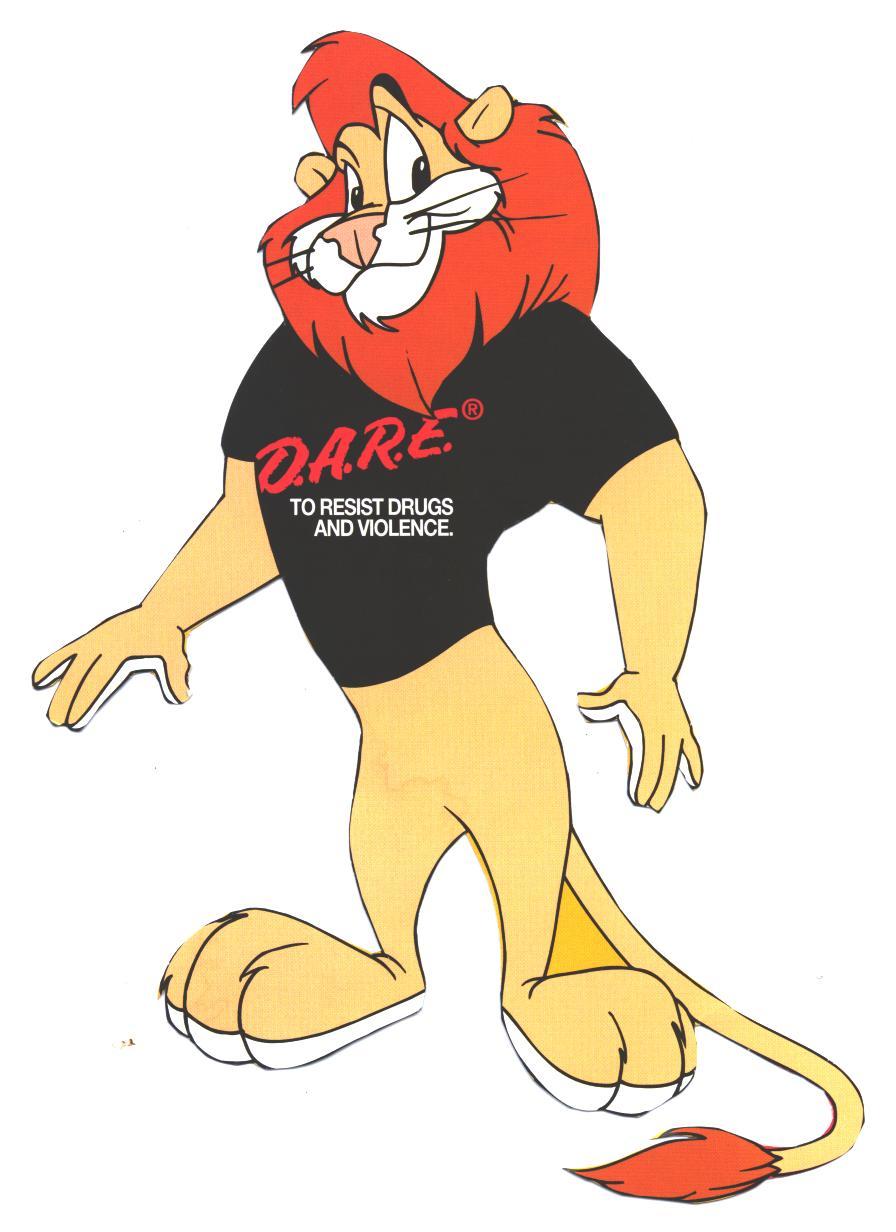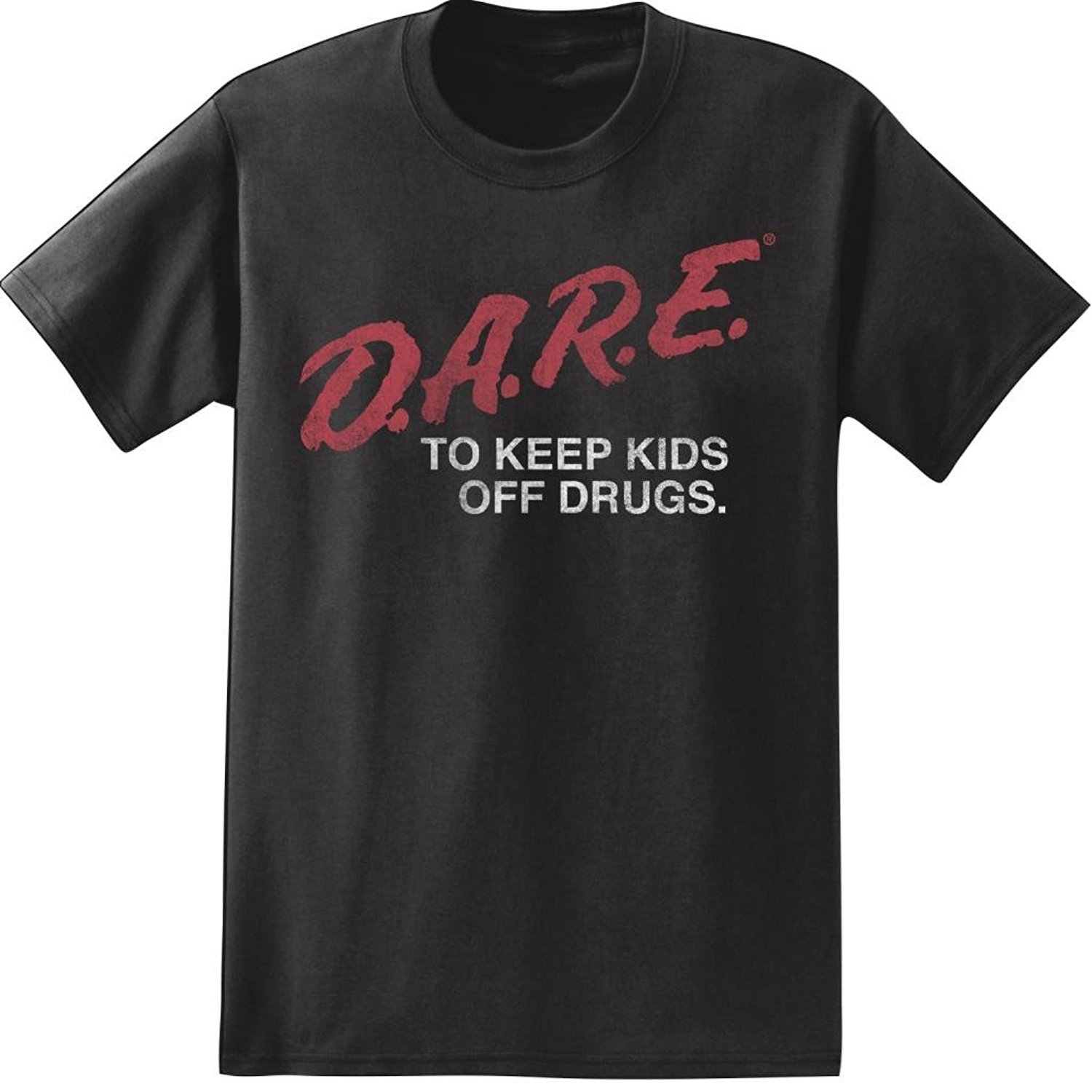Wearing your politics on your t-shirt is a simple and direct way to communicate what you believe. Practiced by everyone from concerned citizens and protesters to feminists and fashion designers, the action is not only more visible than ever, but also more loaded. T-shirts bearing bold sentiments like ‘The Future is Female’ or ‘This Pussy Grabs Back’ can cut to the core of current issues, serving as their own kind of peaceful war-cry for those who may not otherwise have a voice.
In less troubled times though, some of the most popular and sought after t-shirts were less about making a statement and more about getting a lol. Within this category lives one of the most time-tested and recognizable: ‘D.A.R.E To Keep Kids Off Drugs.’ It’s the shirt your friends wore to parties in the 90s and that actors, celebrities, and fashion bloggers continue to be photographed in today. With its bright red, freehand logo and unintentionally funny sounding request, it has been sought out in second-hand stores for decades and integrated into low-key fashion looks around the globe. But what is the story behind fashion’s favorite ironic t-shirt?
As you may know, the D.A.R.E t-shirt began as a piece of merchandise originally produced for a drugs awareness program that was launched in L.A. in 1983. The aforementioned irony isn’t only due to a piece of anti-drug propaganda becoming a stoner favorite, but also that it outlasted and outshone the relatively unsuccessful campaign. While the shirt became internationally recognized, the program didn’t really work.
D.A.R.E — it stands for Drug Abuse Resistance Education — was a program targeting students and promoting zero-tolerance, launched in response to a rise in substance abuse and gang violence. As an initiative between the police and the state school system, D.A.R.E was different to other programs of its kind because it saw actual policemen and women visiting classrooms to deliver lessons in the virtues of abstinence. Police were at the forefront of the escalating drug problems in communities, so it made sense they would have more luck getting through to the kids. While this was well-intentioned, hoping kids would stay away from drugs by telling them to proved ineffectual. The first thing the organization did wrong was nail the branding. In trying to relate to young people, the graphic design team made a cool logo out of an acronym that accidentally spoke to the feeling of daring to experiment with drugs.
The mascot didn’t help either. Darren the Lion was a velvety-voiced cartoon messenger who starred in campaign videos that kind of begged to be watched while high. On top of that, the D.A.R.E vehicles used by police to promote the program were expensive luxury and performance cars that had been seized during previous drug raids. Their intended message was a warning: get involved drugs and you’ll lose everything you care about. But in reality, it reinforced the idea that drug dealers live exciting lives with cool cars and lots of cash.
At its peak in the mid 90s, D.A.R.E was practiced in 75% of American schools and cost tax payers around $200 million to run. A few years later, the cost of the program was ambiguously estimated at between $200 million and $2 billion. At the same time, there were already more than a dozen studies published claiming that the program had “absolutely no measurable effect on drug use.” Consequently, in the early 2000s, an organization called the Government Accountability Office stepped in to evaluate D.A.R.E. The federal watchdog was dedicated to monitoring government spending of taxpayer money, and was aware that D.A.R.E was churning through its fair share of funds. The GAO’s studies looked at kids five to 10 years after being involved in the D.A.R.E program, and in each instance, it found “no significant differences in illicit drug use,” between them and a control group. As a result, funding was pulled, and D.A.R.E plunged into financial trouble by 2010.
However, there was enough good will in the D.A.R.E philosophy that even today, according to its website, there are 36 million children in 43 countries taking part in the program. Based on much research, feedback, and funding deprivation over the years, D.A.R.E’s focus is now less about zero-tolerance and more about teaching important decision-making skills and core values like honesty, safety, and responsibility. With current backing from the Substance Abuse and Mental Health Services Administration, there’s now evidence to suggest it may actually be working. And with a new department called ‘Keepin’ It R.E.A.L (Refuse, Explain, Avoid, and Leave)’, we’re seeing the birth of a brand new cult t-shirt, coming soon to a house party near you.

Credits
Text Briony Wright
